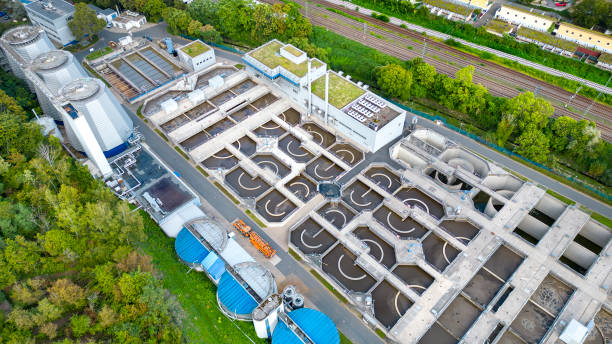Concrete recycling is vital to sustainable construction practices, offering an innovative approach to managing construction waste and minimizing environmental impact. The process of concrete recyclers transforms discarded concrete into valuable resources, aligning with the principles of eco-friendly construction.
Get ready to glimpse how the seemingly discarded concrete takes on a new life, contributing to a more resource-efficient and environmentally conscious construction industry.
The Process of concrete recyclers

1- Sources of Concrete Waste:
Concrete waste originates from various sources, including construction sites, demolition projects, and infrastructure development. Discarded concrete may include broken slabs, old foundations, and demolished structures.
2- Importance of Proper Collection Methods:
Proper collection methods ensure a steady supply of concrete waste for recycling. Efficient collection minimizes environmental impact, reduces landfill usage, and promotes sustainable construction practices.
3- Identifying Reusable Materials:
Concrete recycling involves sorting materials to identify components suitable for reuse. Reusable materials may include aggregates, steel reinforcements, and other valuable resources embedded in the concrete.
4- Techniques for Efficient Sorting:
Advanced sorting technologies, such as magnetic separators and screening equipment, enhance the efficiency of the sorting process. Manual sorting is also employed to identify and separate different materials for meticulous recycling.
5- Crushing Machinery and Techniques:
Crushing is a fundamental step where discarded concrete undergoes mechanical processing to break it down into smaller, manageable pieces.
Heavy-duty machinery, such as crushers and impactors, crushes concrete into granules or aggregates.
6- Ensuring Quality of Recycled Materials:
Quality control measures are implemented during crushing to ensure the resulting recycled materials meet industry standards. Regular testing of the crushed materials helps verify their suitability for various construction applications.
Discover how automatic street lights works
Environmental Benefits of Concrete Recycling

Impact on Waste Management:
- Concrete recycling significantly reduces the volume of waste sent to landfills, easing the burden on waste management systems.
- By diverting concrete waste from landfills, valuable space is preserved, and the environmental impact associated with landfill usage is minimized.
Alleviating Pressure on Landfill Sites:
- Recycling concrete helps alleviate pressure on landfill sites, which often struggle with limited capacity and increasing disposal demands.
- Reducing the reliance on landfills contributes to a more sustainable waste management approach.
Comparison with Traditional Concrete Production:
- Concrete recyclers consume fewer resources compared to traditional concrete production methods.
- Reusing aggregates and other materials from recycled concrete reduces the demand for natural resources, such as gravel and sand.
Lower Carbon Footprint:
- Concrete recycling offers a more environmentally friendly alternative by minimizing the need for new raw materials and energy-intensive extraction processes.
- Compared to traditional concrete production, recycling results in a lower carbon footprint, contributing to mitigating greenhouse gas emissions.
Success Stories of Concrete Recyclers
Greening the Skyline: Sustainable Skyscraper Construction
A high-profile skyscraper construction project in a significant metropolitan area successfully incorporated recycled concrete into its foundation and structural elements. This innovative approach reduced the project’s environmental impact and set a precedent for future sustainable developments in urban landscapes.
Urban Renewal Through Concrete Revival
An urban renewal project in a historic district successfully repurposed discarded concrete from demolished buildings. By recycling the concrete materials, the project preserved the area’s architectural heritage and minimized construction waste, showcasing how concrete recycling can contribute to environmental and cultural sustainability.
Eco-Conscious Infrastructure: Bridge Reconstruction
A bridge reconstruction project prioritized sustainability by utilizing recycled concrete for its construction. The project showcased how concrete recyclers recycled materials’ engineering strength and durability, proving that eco-conscious choices in infrastructure development can be environmentally responsible and structurally sound.
FAQs
What services does a concrete recycling center provide?
A concrete recycling centre typically offers services for collecting, processing, and repurposing concrete waste. This may include sorting, crushing, and recycling concrete materials.
Is concrete recycling free of charge?
The availability of free concrete recycling services depends on the recycling centre’s or facility’s policies. Some centres may offer free services, while others may have associated costs.
What functions does a concrete recycling plant perform?
A concrete recycling plant processes discarded concrete materials, crushes them into aggregates, and prepares them for reuse in construction projects. The plant may include equipment for sorting, crushing, and screening.
Are there any regulations for concrete recycling in San Diego?
Local regulations may dictate specific guidelines for concrete recycling in San Diego. Users should know and comply with these regulations to ensure responsible recycling practices.
What are the environmental benefits of concrete recycling in Colorado Springs?
Concrete recycling in Colorado Springs reduces waste, conserves resources, and minimizes environmental impact by repurposing discarded concrete materials.






